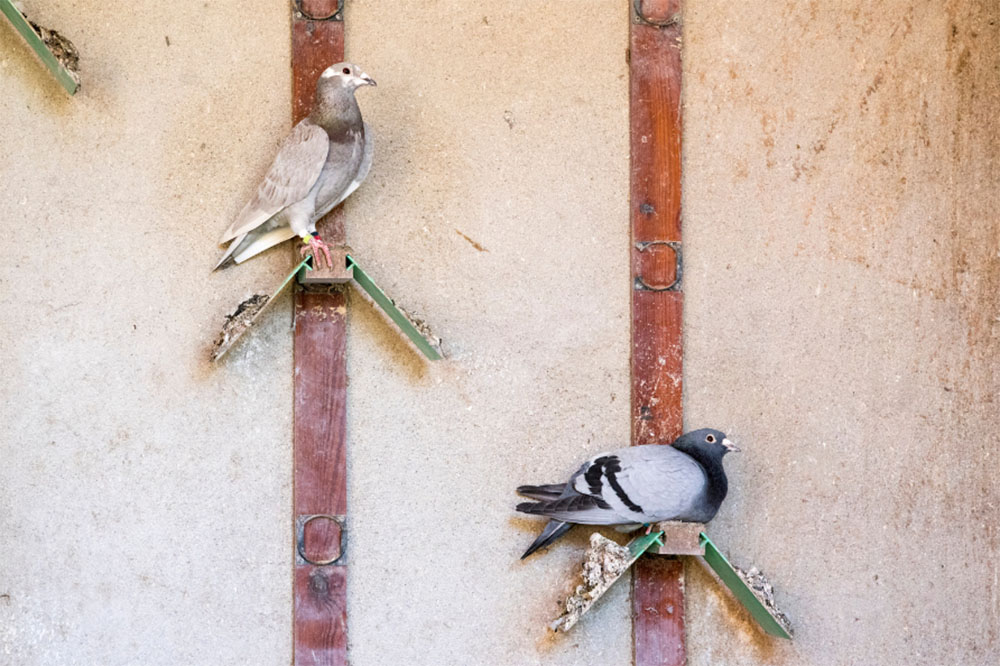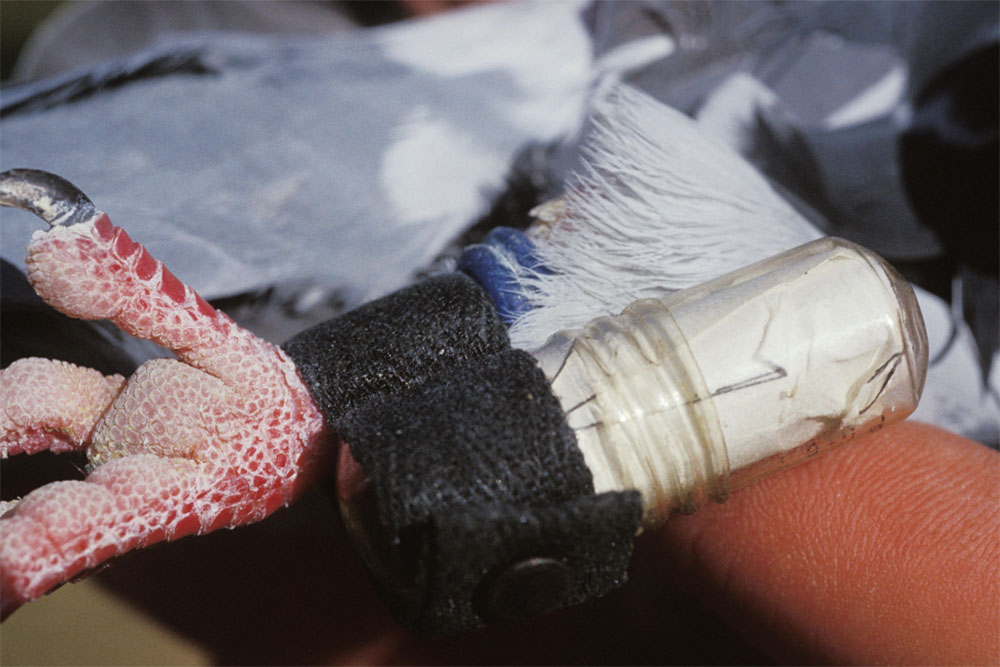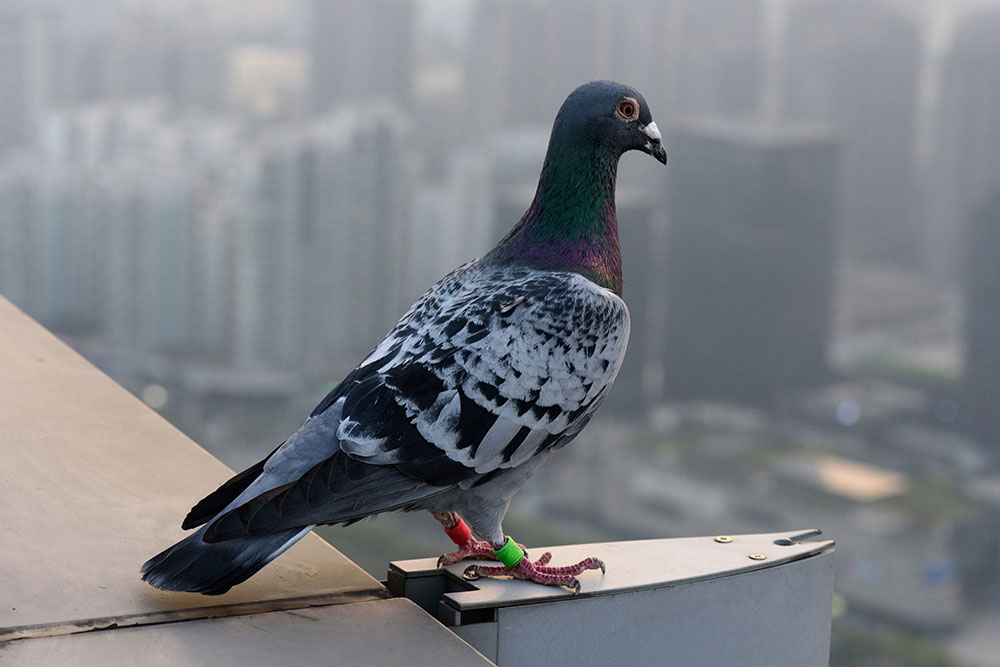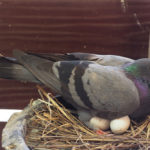Pigeons are wonderfully versatile birds.
Homing pigeons, or carrier pigeons, are birds that have been specially trained to carry messages that can weigh up to 50g between different places.
It has been estimated that pigeons have been trained as carrier pigeons for roughly 5,000 years.
In fact, these birds were once incredibly important methods of communication.

They were able to save thousands of human lives during the second world war, as they were used to carry messages across treacherous enemy lines.
If it wasn’t for carrier pigeons, the war could have ended very differently.
These impressive birds have the uncanny ability to find their way back home from over 1,000 miles away. So it’s fairly obvious to see why they would have been tasked with such an important job!
Nowadays, there is less of a need for carrier pigeons.
With smartphones and electronic mail, we can exchange messages instantly, so carrier pigeons have become more of a hobby than a necessity.
There are some people who still enjoy training their very own carrier pigeons, either for racing or purely for entertainment.
Do you keep pigeons and are thinking of training them to become carrier birds? It’s much easier than you think!
Today, we’re going to cover everything you need to know about training your pigeons to become carrier pigeons.
When Should You Start To Train Your Carrier Pigeon?
Training your pigeons at the right time will be crucial for your birds.
This is because if you were to start training them as homing birds too soon, they might not be ready to be trained just yet.
However, if you were to wait too long, it may be too late for your bird to learn the necessary skills needed to be a carrier pigeon.
It is widely acknowledged by experts that the ideal time to start training your pigeon is around 6 weeks of age.
This will be the time that they can accurately remember where the entrance and exit of their coop are, which will be key parts of the whole training process.
What You Will Require To Train Your Carrier Pigeon
You will need to remember that training your birds to become carrier pigeons will be an entirely different thing from simply keeping them as pets.
Whereas a pet pigeon will need to be kept in a secure aviary or cage, carrier pigeons will require different equipment altogether.

There are some items which will be similar or the same, however, if you want to keep carrier pigeons, you will need to ensure that you have all of the necessary equipment that you will need to do so.
This will mostly be in terms of where your pigeons will live. You will need to purchase a dovecote or a loft, as this will allow your pigeons to leave and return as they need to.
There are also premade pigeon enclosures that you can opt for. However, you can also build one of these yourself if you want to save yourself money.
No matter the option you select for your pigeons, you will need to ensure that their loft has a trapdoor that you can use to let your pigeons out.
The size of the coop will also be important. You will need to have around 10 cubic feet of space for each pair of carrier pigeons.
You will also need to ensure that you place your loft or coop in an area that will be safe and free from predators.
Make sure to keep it away from any trees or wires that might intercept your pigeons as they leave or enter their coop.
Plan on breeding your carrier pigeons? Then you will need to ensure that they have a separate area where they can build a nest as well as incubate their eggs.
If you start with a smaller space, you can then expand on this if you were to add more pigeons to your coop. You can also adjust the size of the coop depending on their needs over time.
Don’t forget the nesting materials and food for your carrier pigeons.
They will require a mix of grains, seeds, fruits and vegetables, as well as protein.
You should be able to find pre mixed bags of this pigeon feed, pigeon pellets, or you can opt to prepare the pigeon food yourself.
Food is essential for your pigeons, but so is water. They will need a clean, fresh supply of water that they can easily access every day.
It will also be worth offering some grit for your pigeons. This is because it is thought to aid with digestion.
Instead of making the food constantly available for your birds, it will be worth only putting this out at set times of the day, and only putting out as much as your birds can eat within a couple of minutes.
This will help to prevent waste which could encourage rodents.
Purchasing Carrier Pigeons
If you don’t have pigeons that are already the right age for training to become carrier pigeons, then you will need to purchase your own birds.
It will be crucial to only buy pigeons from a reputable breeder to ensure that the birds have been well cared for and are healthy.
The price of pigeons will vary between $50 to even a couple of hundred dollars a bird.
One thing to look out for to ensure that you have found a responsible breeder is that the pigeons will have their legs banded.
If the birds don’t have banded legs, you will need to do this yourself. This is so that you can easily identify your birds once they return to you.
How To Train Your Carrier Pigeon
You will be surprised by how easy it will be to train your birds to become carrier pigeons.

The only things you will need to do are remember to be patient, consistent, and take your time with the process.
Here’s how you can train your bird to become a carrier pigeon.
Familiarize Your Pigeons With The Trapdoor
Firstly, you will need to get your pigeons familiarized with the trapdoor in their coop, and how they can use this.
This is how they will fly in and out of your coop, and they will need to be able to do this on their own before you can progress with their training.
You will need to allow your bird to leave the coop on its own.
They will also need to become familiar with the nearby surroundings of their coop so they can feel more confident in doing this.
Once your pigeon has mastered flying the coop, you can move on to the next stage of their training.
Getting Your Pigeons To Leave Their Loft
So now your pigeon has mastered leaving the coop via the trapdoor.
Next, you will need to teach them how to find their way home to you. The vast majority of this will of course be down to instinct.
However, you will need to be nearby so that you can easily watch and monitor their progress.
To train your pigeon to find their way home, you will need to place them in a nest or small crate that they can’t get out of without you releasing them.
Now you will need to take your pigeon to around a mile away from your pigeon’s loft.
Let your pigeon out of this cage, and they should be able to find their way back home again.
It will be important to start with smaller distances, so that your pigeon can slowly build up their homing pigeon skills.
You will need to repeat this stage a couple of times every week so that your pigeon can become more familiar with their surroundings.
It can also help your bird to remember how to return home, even when you gradually increase the distance.
Gradually Increase Distance
Now that your pigeon has mastered the skill of returning home to their coop, you can gradually increase the distance that you release them from.
Once your pigeon has mastered this skill from a mile’s distance, you can start to add on an additional five miles every week.
Make sure that you are taking your bird further away each time you take them away from their coop.
It will also be key to do this from different directions and locations, so your carrier pigeon isn’t simply flying across the same route every time you do this.
This will be essential for building up their skills as a carrier pigeon so that they can easily find their way home, even from locations they’ve never been to before.
Training Your Pigeon To Return Home
There’s no need to be worried about your bird remembering to find their way home.
Pigeons have been specifically designed to be homing birds, so they will be able to easily find their way back to your coop if you follow the above steps.
Ensure that you have a fresh supply of good quality food and fresh water, and your pigeon will happily return to their coop.
This is because it will be a much more viable option for your pigeon rather than having to hunt for their own food.
You can also encourage them to come home by making the coop a cozy place for them to be.
As long as you give them positive attention, too, this can help make them want to return home to you.
Things To Bear In Mind
One thing that you will need to bear in mind when training your carrier pigeon is that when you increase the distance between your bird and its coop, it will take longer for your bird to find their way home.
So it’s best not to sit around waiting for them to appear, as it may take them a day or two before they return home to the coop.
Just trust in the process and that your pigeon will return home safe.
Top Tips For Success
The best way to ensure you can successfully train your bird to become a carrier pigeon is to maintain a daily routine.
This can be a time consuming process, so by sticking with a daily routine and creating a timeline for you and your birds to follow, you can ensure that they have a much better chance of gaining the skills necessary to become carrier pigeons.
It will also be crucial to ensure that all of your birds are banded. This will help you to easily identify them, and can also be a lifesaver if one of your birds becomes lost.
You can report lost birds via pigeon clubs, so that if your bird is discovered by a different bird trainer, you can easily retrieve them.
If you don’t band your bird, you could end up losing it.
This is because the trainer who finds it won’t have any indicator of where the bird belongs.
So making sure that you band your birds will be the responsible thing to do.
In Summary
So there you have it! It is super easy to train your very own carrier pigeons, and this can be an incredibly rewarding hobby for both you and your birds.
Pigeons are also fairly easy to train, so you can enjoy the whole process along with them.
Just make sure that you take your time with the whole process, band your pigeons, and give them a loving home to return back to, and you won’t have any trouble training your very own carrier pigeons.






